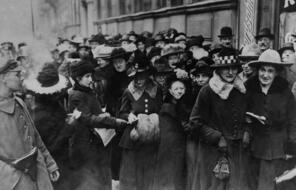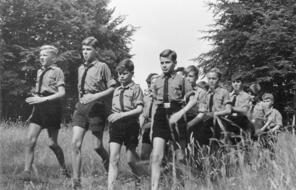The Life of Oskar Schindler
At a Glance
Language
English — USSubject
- History
- Social Studies
- The Holocaust
Oskar Schindler was a German who joined the Nazi Party for business reasons. Before the war, Schindler was known mainly for his interest in making quick money, drinking, and womanizing. Indeed, he saw the war at first as a chance to indulge in all three. Soon after the invasion of Poland, he came to the city of Kraków in search of business opportunities. With equal doses of bribery and charm, he managed to convince the Nazis that he was the right man to take over a failed cookware factory outside the city. He then proceeded to make a fortune turning out mess kits for German soldiers.
Schindler’s profits were extraordinarily high because he used low-paid Jewish workers from the ghetto the Nazis established in the city. During the war, many industrialists like Schindler used the forced labor of Jews living in Nazi ghettos or concentration camps. Major German companies, including Volkswagen, Bayer, and IG Farben, the largest chemical company in the world at the time, profited handsomely from coerced labor. This labor often occurred in the worst conditions possible, and many workers died as a result of being subjected to excessively long, arduous work shifts without adequate food.
There was initially little to distinguish Schindler from the other businessmen who cooperated with the Nazis, until the liquidation of the Kraków ghetto threatened the workers he relied on. As the war dragged on and Schindler began to build personal relationships with his workers, he underwent a personal transformation. Over time, Schindler became less concerned with making a profit; soon he was spending enormous sums of money to keep his workers safe.
He began by turning his factory into an official subcamp of a newly constructed labor camp at Plazów. For a time, it was a haven for about 500 Jews. Then, in the fall of 1944, the Nazis ordered both camps closed and all workers shipped to Auschwitz, a killing center. Schindler refused to let that happen. He put together a list of 1,100 men, women, and children that he claimed as his workers. He then used his money and influence to transport those workers to a new factory he was building at Brinnlitz, Czechoslovakia. When the Jewish women who worked in his factory were transported to Auschwitz by mistake, he accomplished the impossible: he managed to get the women back by offering Nazi officials a fortune in bribes.
Connection Question
- Kosiński wrote, “To say ‘no’ is to deny the crowd, to be set apart, to reaffirm yourself.” How does his comment apply to Oskar Schindler?











